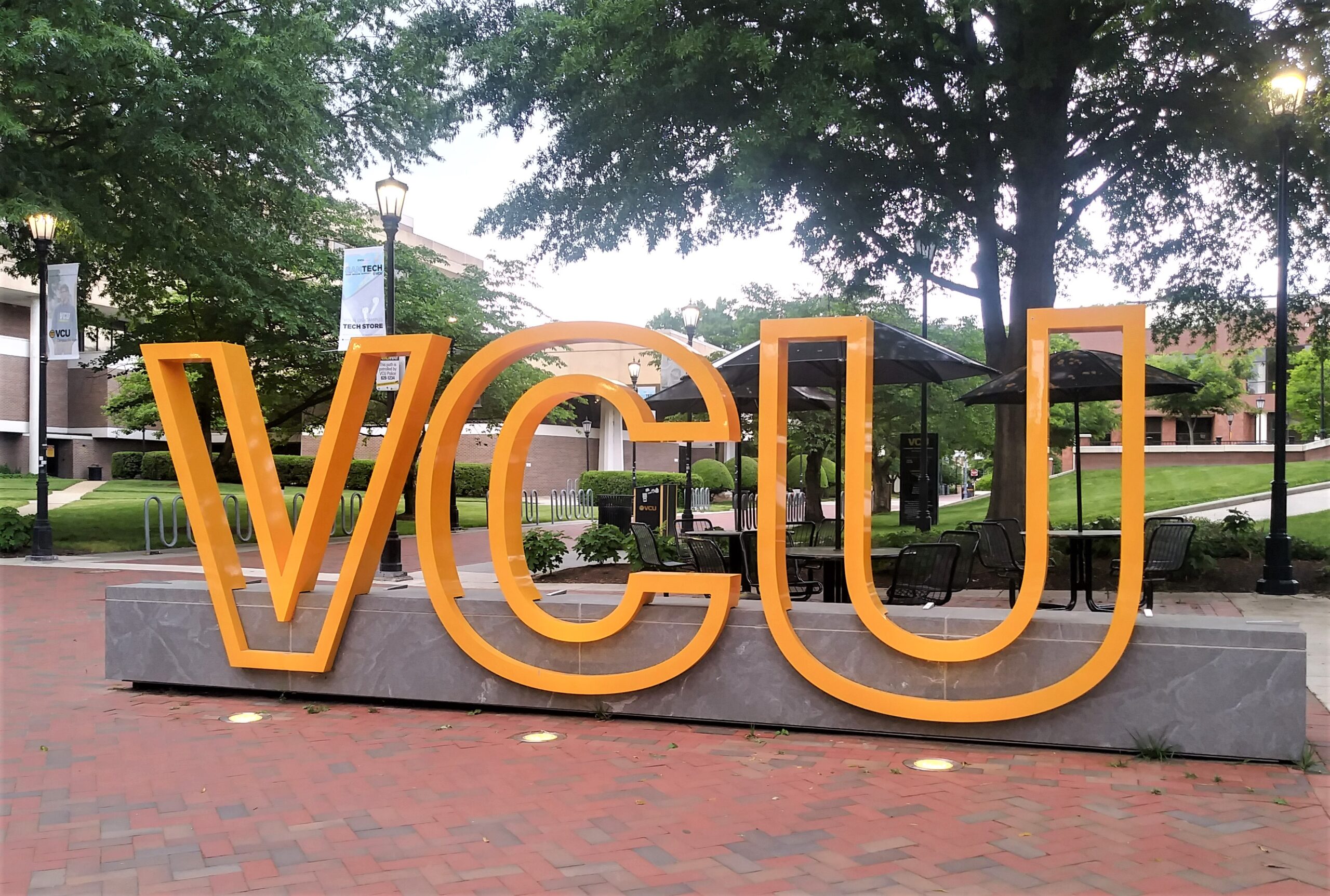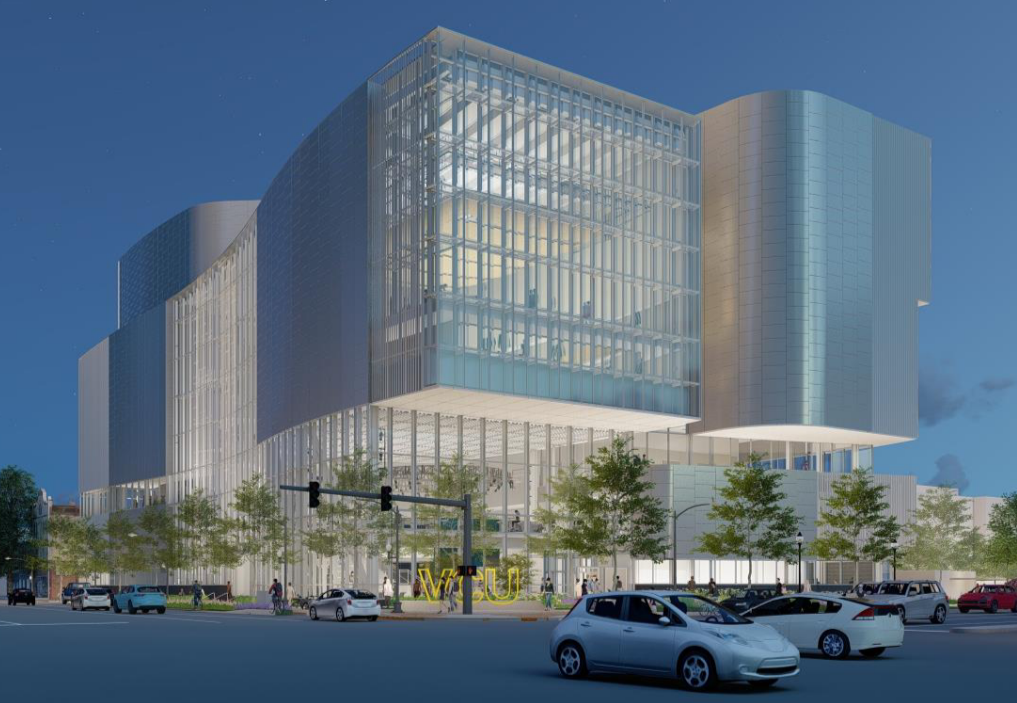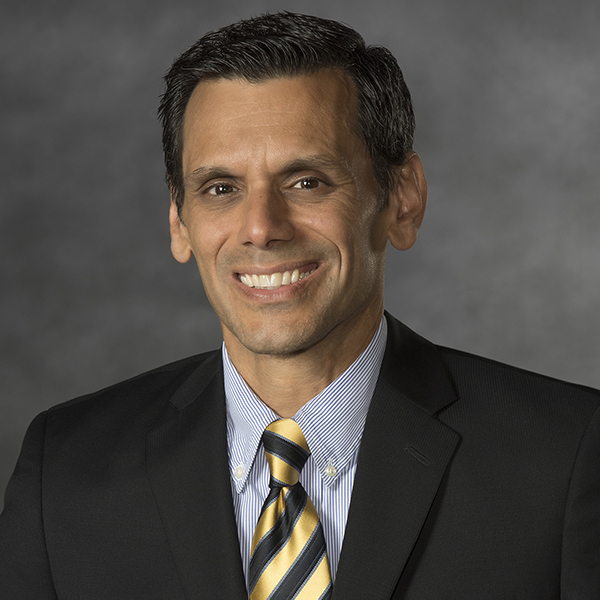
The VCU Board of Visitors approved new language related to real estate and capital projects in the charters of two oversight committees last week. (BizSense file)
In the wake of VCU Health’s controversial exit from a failed downtown redevelopment project, the university has clarified real estate and construction responsibilities of its own governing board’s committees.
The VCU Board of Visitors last week approved updated language to the charters of its administration and finance committees, both of which serve to review and provide oversight of university activities.
The newly christened Facilities, Real Estate and Administration Committee, the entity formerly called the Administration Committee, now has more detailed language in its charter to better describe its current real estate and construction responsibilities, in addition to its name change.
The committee’s responsibilities include review of the university’s six-year capital plan, plans for major capital projects, demolition work, and property acquisition and sales. The committee forwards recommendations to the full Board of Visitors, which makes the final call on those topics. The committee, which draws its membership from the full board, has additional responsibilities such as oversight of human resources and information technology.
The Finance and University Resources committee’s own charter was updated last week to include review and recommendation of approval of contracts, including construction contracts, that exceed $5 million. Previously, contracts on that magnitude were earmarked as a responsibility of the former administration committee prior to final consideration by the full board. The change has the effect of creating a formal two-part review for larger projects prior to the full board’s consideration.
The finance committee also reviews financial policies, tuition and fees and assumptions on which VCU’s budget is based, among other tasks.
University officials said last week in interviews with BizSense that the changes weren’t specifically in response to VCU Health’s ill-fated and costly effort to redevelop the city’s Public Safety Building property at Leigh and 10th streets. But they acknowledged that the failed project has spurred the university to review how it handles its real estate and capital project workflows.
“The reality is when anything big happens you’re going to be looking at everything,” VCU President Michael Rao said. “You want to take responsibility and lead into the future by being sure these kinds of things, institutionally and culturally, cannot happen again.”
The health system, which is a separate organization but shares some leadership with the university, paid tens of millions of dollars to exit the Public Safety Building project. Rao is also chairman of the health system’s board of directors.
Both committees and their associated university staff had collaborated in the past on such matters but the organizational tweaks serve to further clarify responsibilities, CFO Karol Gray said. VCU Health projects aren’t reviewed by the university-side committees.
Gray said the primary reason for the changes to the committees’ charters was related to confusion over the review of approvals related to the university’s upcoming CoStar Center for Arts and Innovation planned for the corner of Broad and Belvidere streets.
That project took a step forward last week when the Board of Visitors voted to approve demolition work for the site where the $253 million arts center is set to rise.
VCU plans to spend about $200,000 to tear down three structures at the roughly 1-acre site: a vacant restaurant at 501 W. Broad St., a former gas station outbuilding at 535 W. Broad St. and a small building at 201 N. Belvidere St. The cost to clear the site is included in the overall project’s budget.
The 213,000-square-foot building is expected to include an auditorium and stage, rehearsal spaces, a costume lab, sound studio and a prop shop for performances.
It will also be home to VCU’s arts programs and will offer hybrid classroom-labs and other facilities intended for arts, medicine, engineering and business students.
When the project was originally approved by the board in 2019, it was anticipated to cost $181 million. Earlier this year, the board approved an increased price tag due to recent inflation and supply chain challenges. Since the project’s initial announcement, the Belvidere parcel has been added to the project site and the square footage of the project increased.
In the spring, real estate data company CoStar, which is helmed by VCU Board of Visitors member Andy Florance, announced it would contribute $18 million toward the construction of the building.

A rendering of VCU’s upcoming arts building planned to be constructed at the corner of Broad and Belvidere streets. (Image courtesy VCU)
Hourigan has been tapped to serve as the project’s general contractor, and the board also on Friday approved the construction contract for the project. William Rawn Associates is the project’s architect.
VCU plans to break ground on the project this year with completion expected in 2027.
The board also approved demolition work for the site of the university’s upcoming Athletics Village near The Diamond. The first phase of demolition will clear the former Salvation Army facility at 2601 Hermitage Road, the building formerly occupied by James River Distillery at 2700 Hardy St. and the former Greyhound bus maintenance facility at 2709 Hermitage Road.
The first phase of demolition is slated for late fall 2023 and will precede the construction of outdoor track facilities and practice fields.
The properties at 2801 and 2901 Hermitage Road, the former ABC headquarters and warehouse, are slated for future phases of demolition.
The university spent around two years and $39 million to cobble together the 40 acres of land needed for the athletics village.

The VCU Board of Visitors approved new language related to real estate and capital projects in the charters of two oversight committees last week. (BizSense file)
In the wake of VCU Health’s controversial exit from a failed downtown redevelopment project, the university has clarified real estate and construction responsibilities of its own governing board’s committees.
The VCU Board of Visitors last week approved updated language to the charters of its administration and finance committees, both of which serve to review and provide oversight of university activities.
The newly christened Facilities, Real Estate and Administration Committee, the entity formerly called the Administration Committee, now has more detailed language in its charter to better describe its current real estate and construction responsibilities, in addition to its name change.
The committee’s responsibilities include review of the university’s six-year capital plan, plans for major capital projects, demolition work, and property acquisition and sales. The committee forwards recommendations to the full Board of Visitors, which makes the final call on those topics. The committee, which draws its membership from the full board, has additional responsibilities such as oversight of human resources and information technology.
The Finance and University Resources committee’s own charter was updated last week to include review and recommendation of approval of contracts, including construction contracts, that exceed $5 million. Previously, contracts on that magnitude were earmarked as a responsibility of the former administration committee prior to final consideration by the full board. The change has the effect of creating a formal two-part review for larger projects prior to the full board’s consideration.
The finance committee also reviews financial policies, tuition and fees and assumptions on which VCU’s budget is based, among other tasks.
University officials said last week in interviews with BizSense that the changes weren’t specifically in response to VCU Health’s ill-fated and costly effort to redevelop the city’s Public Safety Building property at Leigh and 10th streets. But they acknowledged that the failed project has spurred the university to review how it handles its real estate and capital project workflows.
“The reality is when anything big happens you’re going to be looking at everything,” VCU President Michael Rao said. “You want to take responsibility and lead into the future by being sure these kinds of things, institutionally and culturally, cannot happen again.”
The health system, which is a separate organization but shares some leadership with the university, paid tens of millions of dollars to exit the Public Safety Building project. Rao is also chairman of the health system’s board of directors.
Both committees and their associated university staff had collaborated in the past on such matters but the organizational tweaks serve to further clarify responsibilities, CFO Karol Gray said. VCU Health projects aren’t reviewed by the university-side committees.
Gray said the primary reason for the changes to the committees’ charters was related to confusion over the review of approvals related to the university’s upcoming CoStar Center for Arts and Innovation planned for the corner of Broad and Belvidere streets.
That project took a step forward last week when the Board of Visitors voted to approve demolition work for the site where the $253 million arts center is set to rise.
VCU plans to spend about $200,000 to tear down three structures at the roughly 1-acre site: a vacant restaurant at 501 W. Broad St., a former gas station outbuilding at 535 W. Broad St. and a small building at 201 N. Belvidere St. The cost to clear the site is included in the overall project’s budget.
The 213,000-square-foot building is expected to include an auditorium and stage, rehearsal spaces, a costume lab, sound studio and a prop shop for performances.
It will also be home to VCU’s arts programs and will offer hybrid classroom-labs and other facilities intended for arts, medicine, engineering and business students.
When the project was originally approved by the board in 2019, it was anticipated to cost $181 million. Earlier this year, the board approved an increased price tag due to recent inflation and supply chain challenges. Since the project’s initial announcement, the Belvidere parcel has been added to the project site and the square footage of the project increased.
In the spring, real estate data company CoStar, which is helmed by VCU Board of Visitors member Andy Florance, announced it would contribute $18 million toward the construction of the building.

A rendering of VCU’s upcoming arts building planned to be constructed at the corner of Broad and Belvidere streets. (Image courtesy VCU)
Hourigan has been tapped to serve as the project’s general contractor, and the board also on Friday approved the construction contract for the project. William Rawn Associates is the project’s architect.
VCU plans to break ground on the project this year with completion expected in 2027.
The board also approved demolition work for the site of the university’s upcoming Athletics Village near The Diamond. The first phase of demolition will clear the former Salvation Army facility at 2601 Hermitage Road, the building formerly occupied by James River Distillery at 2700 Hardy St. and the former Greyhound bus maintenance facility at 2709 Hermitage Road.
The first phase of demolition is slated for late fall 2023 and will precede the construction of outdoor track facilities and practice fields.
The properties at 2801 and 2901 Hermitage Road, the former ABC headquarters and warehouse, are slated for future phases of demolition.
The university spent around two years and $39 million to cobble together the 40 acres of land needed for the athletics village.

Glad they have refined the vision and responsibilities of the committee! I’m excited to see the CoStar Arts’ Building get started and very surprised I have not seen demo or work get started on the VCU athletic Village. Are there any Ideas on with that projects will finally get kicked off and start to see development?
Speaking of demo, you know what would be great? If they tore down or seriously rennovated the OLD Arts bldg. When I was an undergrad, my uni’s arts bldg was also semi-brutalist, but it had big tall window and even skylights in the painting rooms on the third floor, so it was nice and functional at least on the inside.
and here comes the 10% increase in tuition next year, and the year after that………
Yes — I remember in approximately 2010 when observant people started putting pen to paper about how there was clearly a “lifestyles” arms-race going on among colleges and universities — from the why-bother? schools to the elite ones. I had an aquaintance at the time who who worked strictly in the higher-education marketing world and when I asked her about this subject she shyly disclosed to me that she not only knew exactly what I was talking about but that she was certain that she was “part of the problem” — in that that her outfit knew very well that… Read more »
I’d be curious to know how much CoStar is paying VCU for the naming rights to the new arts building at Belvidere and Broad.
did you read the article? In the spring, real estate data company CoStar, which is helmed by VCU Board of Visitors member Andy Florance, announced it would contribute $18 million toward the construction of the building.
Let’s hope this doesn’t get rescinded given the housing market shift.
I doubt it. CoStar seems to have made a strategic long term decision to enmesh themselves in Richmond and 18 million is not a big line item and goes in their ESG PR fluff. Much better to lay off people to save money if conditions change. I do not KNOW, but I think the business they are in may be a bit hard for people like you or I to guess — whatever the market conditions are now (and I know a bit about that — certainly hard for RE agents…) for all I know CoStar might be getting MORE… Read more »
Thanks, Eric. Missed that paragraph. In full disclosure, I skimmed the article but did not read it thoroughly. Thanks for the clarification.
Maybe all these VCU people should get into URBAN PLANNING!!! Then, the fan boys will clap at anything they do like trained seals!!!
Now that the cleared up the duties can they clear out the board members?